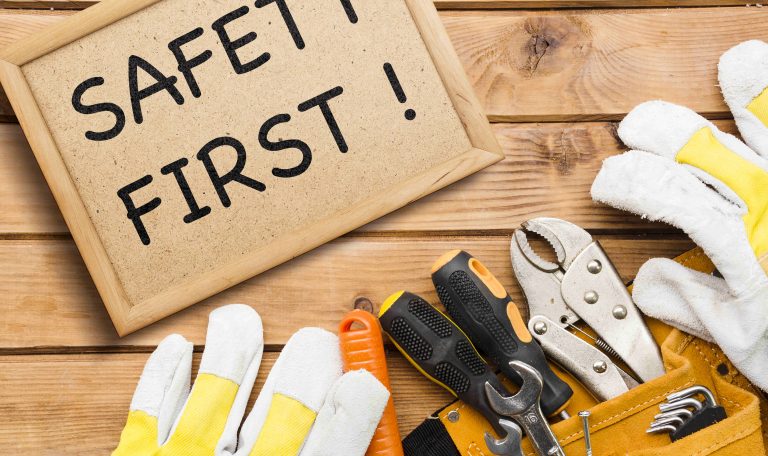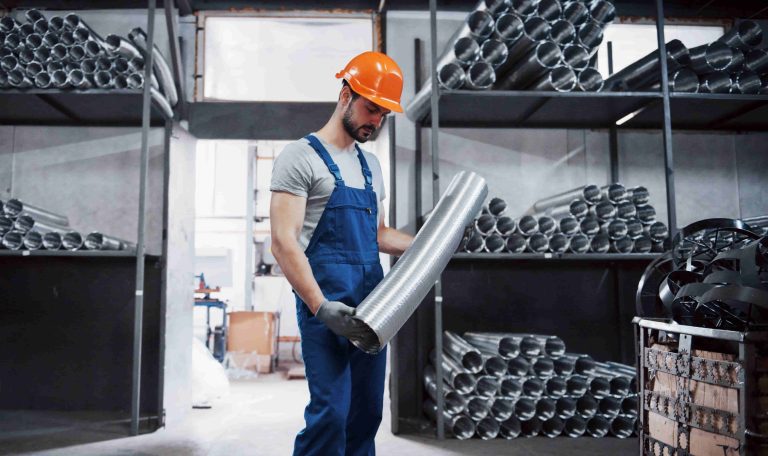In the world of construction and manufacturing, steel and metal fabrication stand as the backbone of countless structures and products we encounter daily. From towering skyscrapers to intricate machinery, the importance of steel and metal cannot be overstated. But have you ever wondered what ensures that the steel and metal used in these applications meet the highest standards? That’s where the unsung hero of the industry steps in: Quality Control.
Quality control is the cornerstone of success in manufacturing and engineering, particularly in fabrication services. The meticulous oversight of every step in the fabrication process ensures the final product’s safety, structural integrity, and adherence to industry standards and regulations. Here, you can explore the central role of quality control in steel and metal fabrication, highlighting its impact on safety, efficiency, and compliance.
The Role in Ensuring Safety and Structural Integrity
 One of the primary objectives of quality control in steel fabrication is to guarantee the safety and structural integrity of the finished products. Whether it’s steel beams for construction or intricate metal components for industrial machinery, any compromise in standards can have catastrophic consequences. Through rigorous inspection and adherence to standards, manufacturers can identify and rectify potential flaws in materials or construction techniques before they pose a risk.
One of the primary objectives of quality control in steel fabrication is to guarantee the safety and structural integrity of the finished products. Whether it’s steel beams for construction or intricate metal components for industrial machinery, any compromise in standards can have catastrophic consequences. Through rigorous inspection and adherence to standards, manufacturers can identify and rectify potential flaws in materials or construction techniques before they pose a risk.
1. Minimising Defects, Errors, and Waste
Quality control measures are not just about safety; they directly impact efficiency and cost-effectiveness. Manufacturers can minimise defects, errors, and waste in the fabrication process by implementing stringent standard protocols. This not only reduces the need for costly rework but also enhances the overall efficiency of production. Fewer defects mean fewer resources wasted, making quality control an essential cost-saving strategy.
2. Meeting Industry Standards and Regulations
Metal fabrication industries are subject to stringent standards and regulations to ensure the reliability and safety of their products. Quality control serves as the linchpin for meeting and exceeding these standards. Fabricators must demonstrate compliance with codes and regulations governing material grade, structural integrity, and safety measures. These practices help custom metal manufacturers in Melbourne navigate the complex landscape of industry-specific standards, ensuring that their products meet or surpass the required benchmarks.
What are the most typical defects in the steel fabrication process?
 A few common defects can sneak into the mix in steel and metal fabrication. We’re talking about weld porosity, those pesky weld cracks, unwanted inclusions, lack of fusion, undercutting that can erode your work, and the frustrating distortion. And don’t forget the brittle welds, excessive spatter, burn-through mishaps, and surface imperfections that can mar your masterpiece. To keep these issues at bay, wield proper welding techniques, keep a close eye on material grade, maintain trusty equipment, and ensure your team is well-trained. Rigorous quality inspections are your secret weapon for a flawless Aussie steel and metal fabrication finish.
A few common defects can sneak into the mix in steel and metal fabrication. We’re talking about weld porosity, those pesky weld cracks, unwanted inclusions, lack of fusion, undercutting that can erode your work, and the frustrating distortion. And don’t forget the brittle welds, excessive spatter, burn-through mishaps, and surface imperfections that can mar your masterpiece. To keep these issues at bay, wield proper welding techniques, keep a close eye on material grade, maintain trusty equipment, and ensure your team is well-trained. Rigorous quality inspections are your secret weapon for a flawless Aussie steel and metal fabrication finish.
Why is quality control necessary for local fabrication companies in Australia?
-
Safety
Steel and metal products are often used in safety-critical applications, such as construction and infrastructure. Quality control helps to ensure that these products are safe and will not fail in use.
-
Reliability
Metal products are also used in various industrial and commercial applications. Quality control helps to ensure that these products are reliable and will perform as expected.
-
Reputation
A company’s reputation is essential for its success. Quality control helps to ensure that the company produces high-quality products that its customers can rely on.
-
Customer base
It also helps to maintain a company’s customer base. Customers are likelier to do business with a company they know produces standard products.
Check some examples
 Incoming material inspection: This involves inspecting all incoming materials to ensure they meet the required specifications. This may include visual inspections, chemical analysis, and mechanical testing.
Incoming material inspection: This involves inspecting all incoming materials to ensure they meet the required specifications. This may include visual inspections, chemical analysis, and mechanical testing.
In-process inspection: This involves inspecting parts and assemblies at various stages of the fabrication process to catch any defects early on. This may include visual inspections, dimensional inspections, and non-destructive testing (NDT) methods such as ultrasonic testing (UT), radiographic testing (RT), and magnetic particle testing (MT).
Final inspection: This involves inspecting the finished product to ensure it meets all customer requirements. This may include visual inspections, dimensional inspections, NDT methods, and functional testing.
In conclusion, the importance of quality control in steel and metal fabrication cannot be overstated. It is the bedrock for ensuring safety, minimising defects, meeting industry standards, and showcasing the commitment to excellence. As manufacturing and engineering continue to advance, quality control will remain pivotal, safeguarding the integrity of structures, machinery, and products across various industries. Fabricators who invest in robust quality control practices secure their reputation and contribute to a safer and more efficient manufacturing world.
At ATSS Fabrication in Melbourne, we take immense pride in our commitment to top-notch quality control practices. Our unwavering dedication to ensuring the highest standards of safety and excellence sets us apart in the world of steel and metal fabrication. Contact us for unparalleled quality and a brighter, more secure future in metal fabrication.

